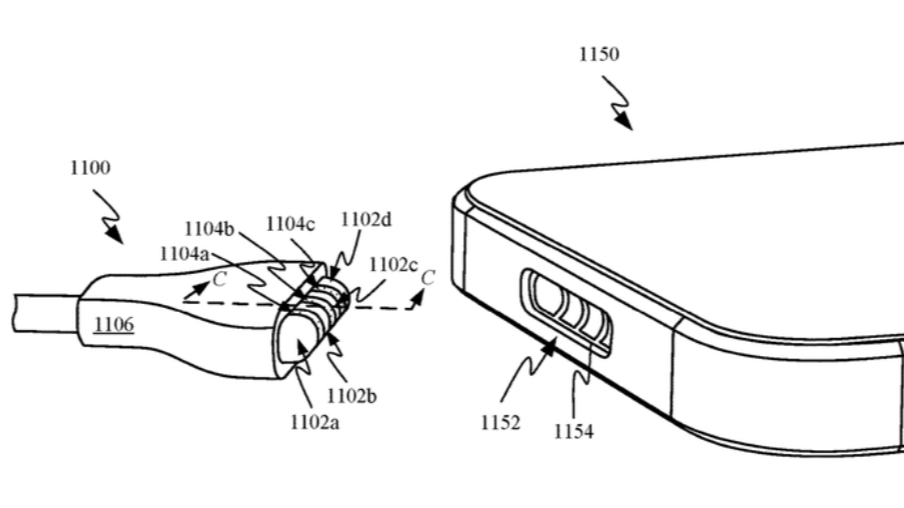
Apple is developing a connectivity port based on its existing MagSafe charger, a new patent suggests.
A recent filing submitted to the United States Patent and Trademark Office shows a three-pinned MagSafe charger, similar to those used to charge older MacBooks, connecting to what appears to be an iPhone.
The patent outlines several pin designs – one rounded, one with a flat surface – which indicate the Cupertino tech giant is looking towards a future without Lightning cables, the 8-pin connector it first introduced way back in 2012.
- These are the best MagSafe accessories for the iPhone 12
- Check out our round-up of the best iPhone chargers in 2021
- Apple’s MagSafe Duo Charger isn’t as powerful as we’d hoped

There's a fair few reasons Apple might be turning its attention to magnet-based charging ports. As well as the improved charging speeds of MagSafe technology – Apple’s existing magnet-based chargers for the iPhone 12 offer up to 15W of wireless charging power – a MagSafe connectivity port would also allow for easy detachment should the charger be pulled or tripped over.
Portless… sort of
The introduction of a MagSafe port would also mark a further step towards a port-free future for Apple’s iPhones.
In spite of the industry-wide move to embrace USB-C connectivity, Apple is reluctant to swim with the tide. Recent comments made by reliable Apple analyst Ming-Chi Kuo (thanks, MacRumors) suggest the company is confident that its own Lightning and MagSafe connectors are already better (both in terms of exclusivity and water-tightness) than USB-C.
It’s clear that Apple would rather abandon Lightning for its own portless design with MagSafe rather than go backwards, as it seems to see it, by adopting USB-C.
Sign up for breaking news, reviews, opinion, top tech deals, and more.
Of course, these magnet-based connectors highlighted in this latest patent wouldn’t make the upcoming iPhones entirely portless – there’d still be a shallow impression at the foot of the device – but they’d nonetheless mark a drastic departure from the charging methods Apple has used in its smartphones for the best part of a decade.
- Check out our review of the iPhone 12
Via MacRumors

Axel is TechRadar's Phones Editor, reporting on everything from the latest Apple developments to newest AI breakthroughs as part of the site's Mobile Computing vertical. Having previously written for publications including Esquire and FourFourTwo, Axel is well-versed in the applications of technology beyond the desktop, and his coverage extends from general reporting and analysis to in-depth interviews and opinion.
Axel studied for a degree in English Literature at the University of Warwick before joining TechRadar in 2020, where he earned an NCTJ qualification as part of the company’s inaugural digital training scheme.